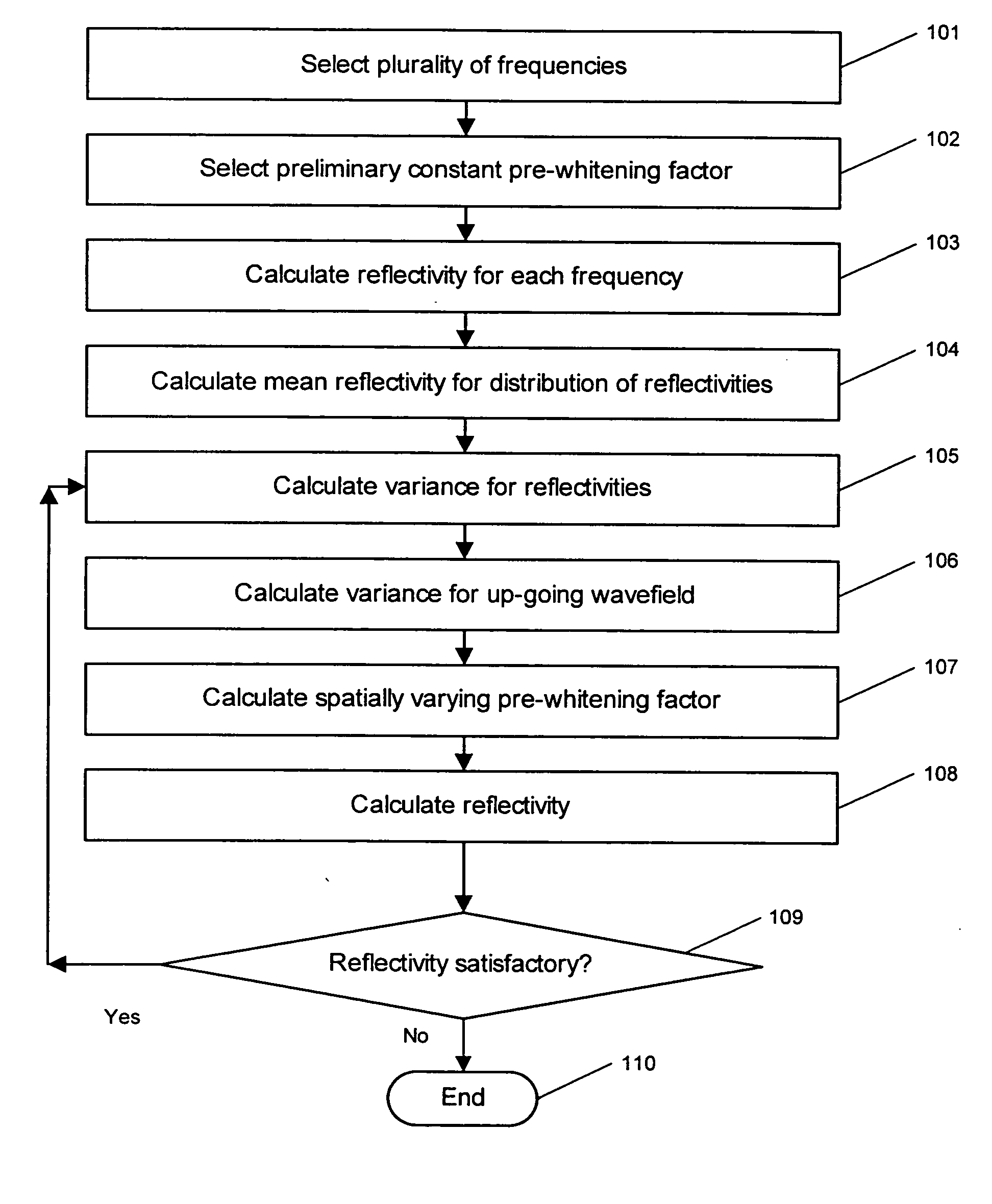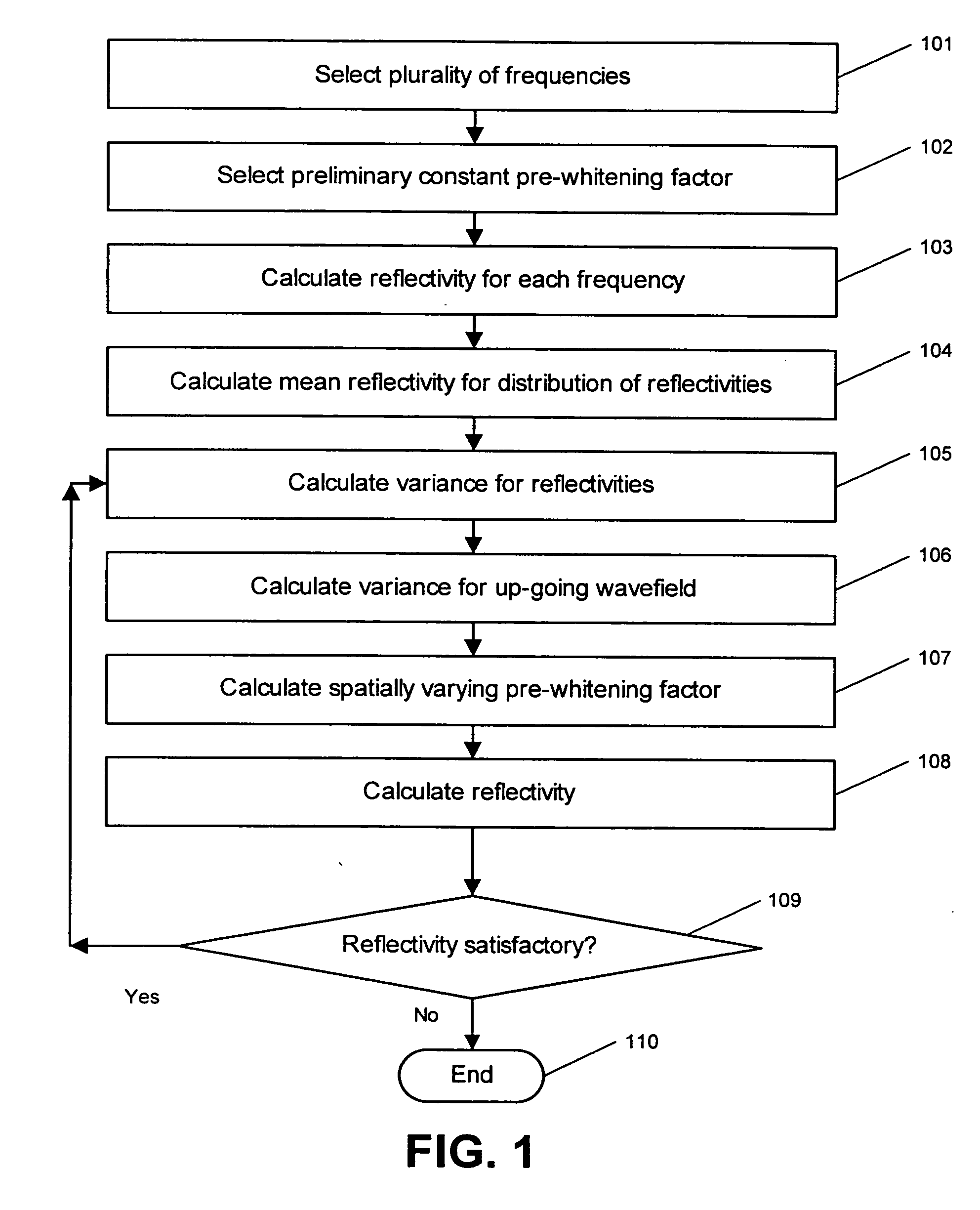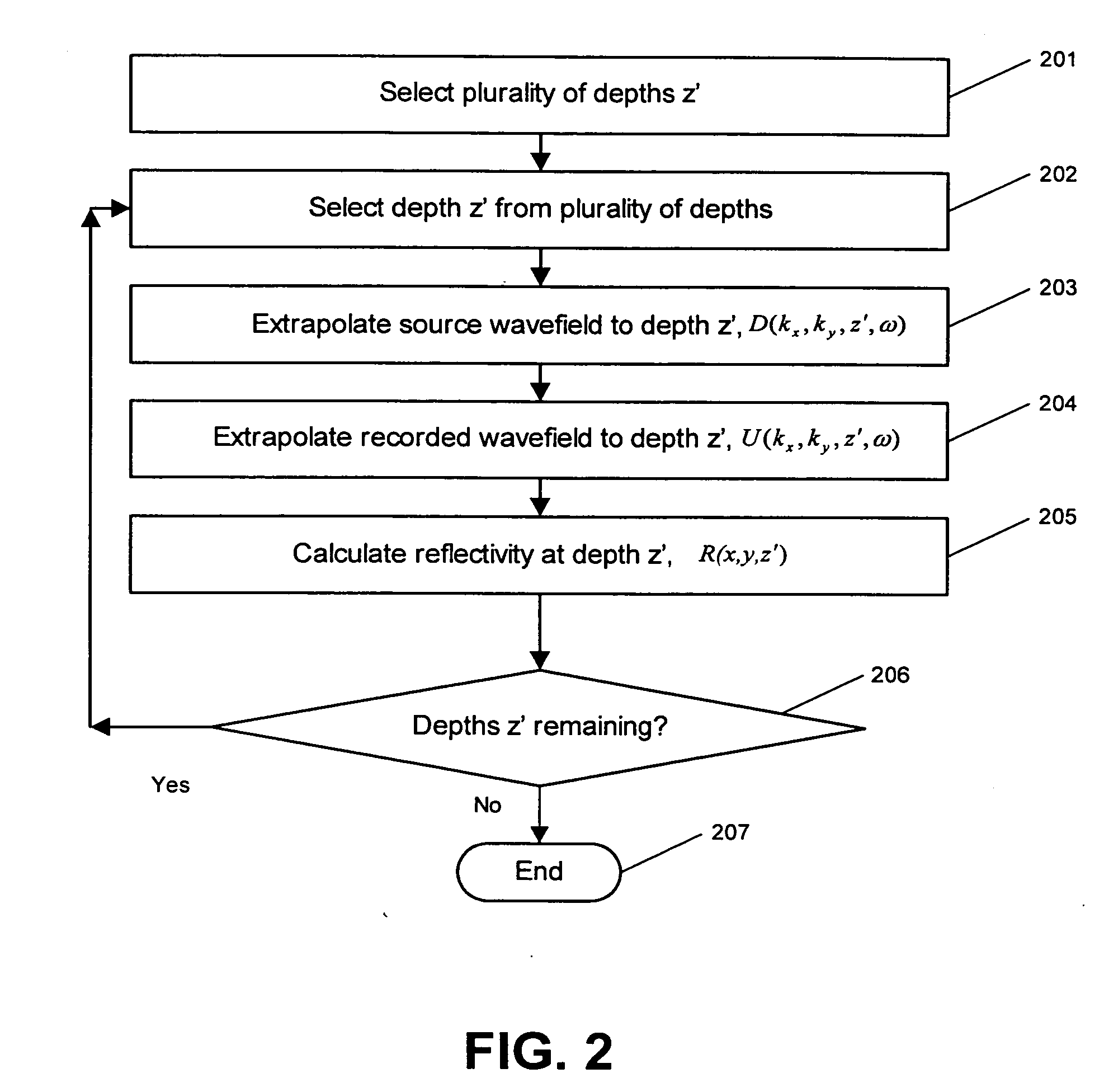Method for imaging of pre-stack seismic data
a seismic data and pre-stack technology, applied in the field of geophysical prospecting, can solve the problems of less discussion, inability to achieve numerical application, and inability to achieve the most practical form of application
- Summary
- Abstract
- Description
- Claims
- Application Information
AI Technical Summary
Problems solved by technology
Method used
Image
Examples
Embodiment Construction
[0032] The invention is a method for imaging prestack seismic data. The method of the invention is illustrated by two embodiments. The first embodiment is an iterative, non-linear inversion to solve for an optimum, adaptive, spatially variable pre-whitening factor. The second embodiment is a least-squares inversion to determine the optimum reflectivity for the set of all frequencies at each depth.
[0033] At each depth and at each lateral coordinate, a dynamic (amplitude-based) imaging principle is applied in order to compute an estimate for the reflection coefficient. One of two imaging methods can be used. The first imaging method computes an average over the set of results for all “upgoing over downgoing” computations, with an added pre-whitening factor in the denominator that automatically adapts to the noise conditions at each location. The adaptation is accomplished by iteratively computing variance estimates for the “data” (receiver wavefield) and “model” (reflectivity). The s...
PUM
| Property | Measurement | Unit |
|---|---|---|
| reflectivity | aaaaa | aaaaa |
| frequency | aaaaa | aaaaa |
| mean reflectivity | aaaaa | aaaaa |
Abstract
Description
Claims
Application Information
 Login to View More
Login to View More - R&D
- Intellectual Property
- Life Sciences
- Materials
- Tech Scout
- Unparalleled Data Quality
- Higher Quality Content
- 60% Fewer Hallucinations
Browse by: Latest US Patents, China's latest patents, Technical Efficacy Thesaurus, Application Domain, Technology Topic, Popular Technical Reports.
© 2025 PatSnap. All rights reserved.Legal|Privacy policy|Modern Slavery Act Transparency Statement|Sitemap|About US| Contact US: help@patsnap.com



